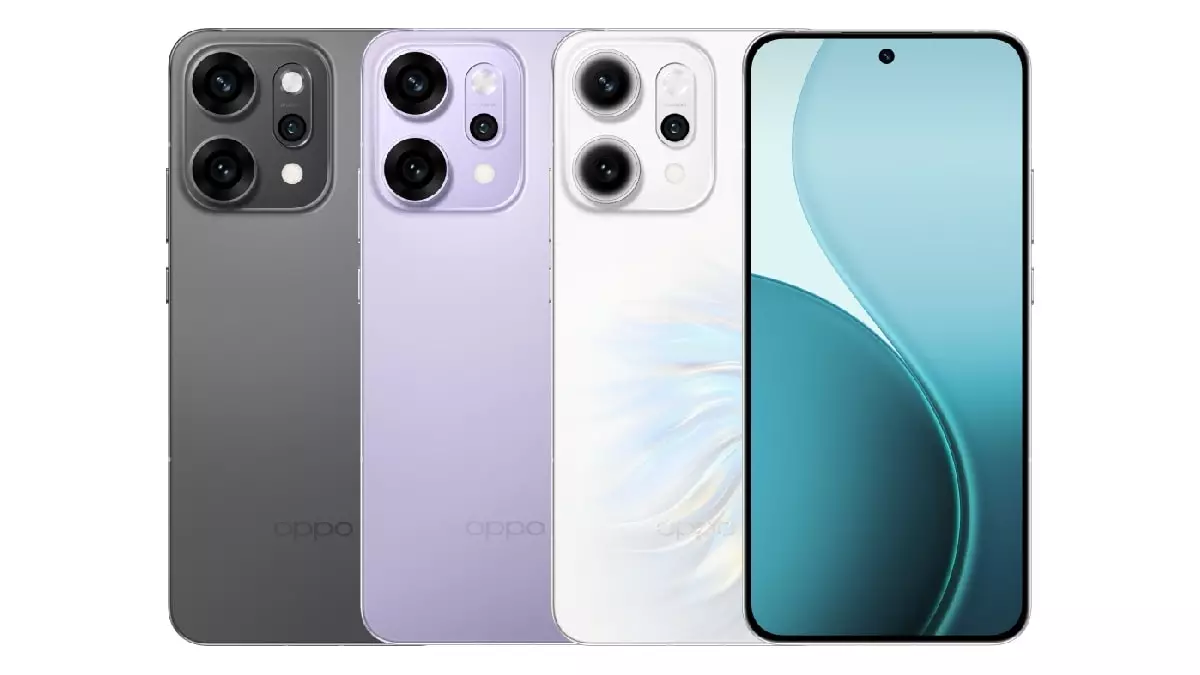In a landscape saturated with smartphone releases, the Oppo Reno 14 5G series appears to promise a new chapter of technological sophistication. Yet, a closer look reveals that much of what is being touted may be more about marketing hype than genuine innovation. The relentless cadence of launches, especially from brands like Oppo, often disguises the fact that consumers have been led to believe in a perpetual upgrade cycle that might not be justified by tangible improvements. The series, which includes the Reno 14 5G and its Pro counterpart, is being positioned as cutting-edge—yet much of its appeal hinges on incremental upgrades, AI gimmicks, and camera megapixels that don’t necessarily translate into real-world benefits.
Despite a sheet of high specifications, the core question remains: Are these devices truly pushing boundaries, or are they merely leveraging consumer desire for the latest shiny object? It’s essential to question whether the focus on “up to 16GB of RAM” and “up to 1TB storage” genuinely serve the average user or simply serve to inflate the product’s perceived value. Consumers should be wary of the narrative that bigger numbers equate to better performance—often, it’s a marketing ploy that distracts from the usability and longevity of these devices.
The Hidden Costs of “Flagship” Features
One of the most compelling yet misleading aspects of the Oppo Reno 14 5G series is its emphasis on AI-enhanced camera technologies and high refresh rate screens. While 50-megapixel sensors with OIS sound impressive, the actual benefit to everyday photography might be marginal at best. High megapixel counts risk creating a false sense of superiority, yet they don’t address core issues like image processing quality, software optimization, or user experience. Similarly, a 120Hz refresh rate, while smoother, is often underused or overhyped—many users do not notice the difference between 90Hz and 120Hz in practical scenarios.
Furthermore, marketing glosses over the potential trade-offs. Remarkably, the series still sports large batteries—6,000 mAh and 6,200 mAh—yet the true longevity of these phones depends on software efficiency and user habits, not just capacity. The promise of 80W wired charging or 50W wireless fast charging, meanwhile, may introduce issues around battery health over time, subtly encouraging consumers to replace their phones sooner rather than later.
Artificial Intelligence as a Double-Edged Sword
The suite of AI features touted in the Oppo Reno 14 series is, in many ways, superficial. Features like AI Recompose or AI Style Transfer sound impressive, but they often add complexity without meaningful user benefits. Instead, they serve as clever hooks to justify higher prices—an all-too-common tactic in today’s smartphone market. These AI gimmicks are marketed as “revolutionary,” but in reality, they tend to be neat tricks that can sometimes introduce more noise and artifacts into images or clutter in user interfaces.
The broader problem is that AI becomes a marketing differentiator rather than a genuine enhancement. While AI can assist in optimizing certain tasks, relying on it as a primary selling point suggests a lack of confidence in the core hardware or software. It also masks the fact that many of these features require extensive user learning curves and do not necessarily improve the average user’s experience significantly.
The Price Tag and the Consumer’s Reality
Though the official pricing in India remains unconfirmed, based on previous leaks, the series positions itself as a premium offering. Yet here lies a troubling dichotomy—are consumers genuinely getting value for their money, or are they paying a premium for a device that offers modest improvements at best? The Chinese prices, translated to Indian currency, indicate a price range that aligns with flagship devices, but the actual worth of these advancements remains questionable, especially given the rapid software obsolescence and the impact of market saturation.
The pricing strategy subtly pushes consumers toward a sense of necessity—linked to social status and perceived technological literacy—rather than a logical decision based on usability or longevity. Consumer rights and expectations should demand more transparency from brands like Oppo. Instead of hyping megapixels and AI features, manufacturers should focus on delivering durable, efficient, and genuinely innovative products that enhance everyday life without exploiting the consumer’s desire for constant upgrade cycles.
The Oppo Reno 14 series exemplifies the real issue plaguing the smartphone industry: a relentless chase for superficial progress designed more to manipulate than to serve. As consumers, it is vital to step back, critically analyze what these devices truly offer, and resist the allure of high numbers and flashy features that often mask a lack of meaningful innovation.

Leave a Reply